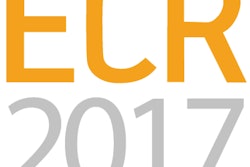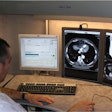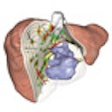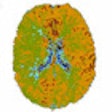
VIENNA - The wider recognition of interventional radiology (IR) as a separate specialty, along with a far more rigorous approach to training and accreditation, is vital to stave off looming turf battles with other healthcare professionals.
That's the view of Dr. Michael Lee, from Beaumont Hospital in Dublin. At Saturday's Professional Challenges Session, he advocated a back-to-basics approach based on a sound and carefully mapped out approach to education, training, and competency. Research, professionalism, and clinical practice should also play a part in this process.
 Dr. Michael J. Lee from Dublin. All images courtesy of the European Society of Radiology.
Dr. Michael J. Lee from Dublin. All images courtesy of the European Society of Radiology.
"We need to think about how we entice people into interventional radiology, and we have to create dedicated training pathways to ensure that our new recruits are not merely 'accidental trainees,' as they often are now," he said. "At present, interventional radiology is only seen as a potential elective topic in undergraduate teaching, and IR procedures are taught by other specialties. This has to change."
Curriculum development, more rapid moves toward harmonization, and greater access to research funds are all essential steps forward. In addition, Lee said an effective way must be found to lobby within the European Union, and to ensure IR's voice is heard in Brussels.
A momentous era beckons for IR as a result of rapid technical innovation and the significant contributions being made to patient care, he said. Interventional oncology, vascular intervention, venous intervention, embolization, and biopsy and drainage procedures are all guided by imaging, and they require a technical set of skills. The discipline will continue to flourish because of future advances in nanotechnology, molecular biology, simulation technology, and robotics.
"The crucial question is: Who will perform the procedures?" noted Lee. "We need to listen to our patients, and what they want above all else is a competent interventional radiologist."
Between 2000 and 2010, a total of 5,788 papers were published by interventional radiologists, compared with 13,224 papers from vascular surgeons and 86,545 from cardiologists. This imbalance must be addressed, he stated. Interventional IQ, produced by Cardiovascular and Interventional Radiological Society of Europe (CIRSE) has an important role to play in this respect.
 Dr. Anna-Maria Belli from London.
Dr. Anna-Maria Belli from London.
CIRSE has supported the formation of a European Board in Interventional Radiology (EBIR), which was introduced in 2010 and aims to establish a common European skill qualification to help standardize training and expertise in IR across Europe.
The objective must be for interventional radiologists who are patient-focused and accountable to the public for delivering evidence-based, effective, and safe medical care, according to Dr. Anna-Maria Belli, a consultant radiologist at St. George's Hospital in London. Regular work-based assessments are essential to prove competency.
"This is what we need to work on and develop," said Belli, adding that interventional radiologists must expand their clinical responsibilities and take more direct control of patient care, which has tended to be neglected in the past.
Originally published in ECR Today March 6, 2011
Copyright © 2011 European Society of Radiology














